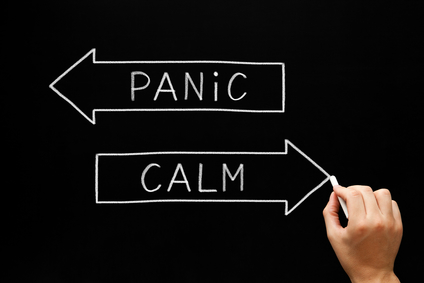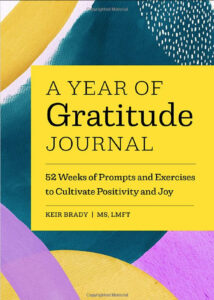Having a panic attack can be very scary. Even though most panic attacks go away within 20 to 30 minutes, it can feel like forever when it’s happening. The intense fear and physical symptoms that accompany a panic attack can keep you from enjoying your life. You might begin to avoid people, places, and activities that could trigger another attack. Although it is not always possible to immediately stop a panic attack, there are things that you can do to decrease both the symptoms and duration.
Symptoms Of A Panic Attack
Although the symptoms of a panic attack can vary, many people state that it feels like they are dying. During a panic attack, your emotional brain takes over and your fear response is in overdrive, even when there is no obvious danger. It is not uncommon for someone to visit the emergency room when they first experience a panic attack as they think they might be having a heart attack. At the start of a panic attack, a sense of impending doom can overcome you. It is difficult to think straight as your thoughts are often racing. You may feel detached from your body and experience an intense fear of losing control. Physical symptoms of a panic attack can include shortness of breath, pounding heart, nausea, hot or cold sensations, chest pain, numbness, feeling light headed, tingling sensations, and sweating or shaking. Even though a panic attack can be quite scary, there are some things you can do to help.
1. Have A Plan
If you need to be in a situation that you know has triggered a panic attack in the past, have a plan in place for how you can manage it. For instance, if being in a large crowd has caused a panic attack before, and you are attending a concert, put a plan in place. Familiarize yourself with the venue, know where the exits and the restrooms are. Decide what you will do if you feel like a panic attack is starting. Having a plan in place can help you feel more in control and allow you to continue doing the things that you enjoy.
2. Focus On Your Breathing
Focus on your breath and try to slow down your breathing. There are a number of different breathing techniques that you can use. Do what works for you. Diaphragmatic breathing, also known as belly breathing, has been shown to stimulate the vagus nerve and lower the fight, flight, or freeze response. Since hyperventilation, fast, shallow breathing where you exhale more than you inhale, is common during a panic attack, deep breathing can be very helpful. You can belly breathe by inhaling, focusing on your belly and puffing it out for 3, and exhaling for 7 drawing your belly in. Don’t worry if it takes awhile to get the hang of it. You can just focus on slowing down your breathing by taking a breath, holding it, and exhaling. Try to make the exhale longer than the inhale.
3. Repeat A Mantra
Acknowledging what is happening to you and reminding yourself that you are safe can be reassuring when you are experiencing a panic attack. Although you may intuitively know that you are safe and not in any real danger, your body and mind are on high alert. Repeating a mantra that you are comfortable with can help you begin to relax. Your mantra should acknowledge how you are currently feeling and also state how you would rather feel. Something like, even though I’m feeling scared and anxious, I know I am safe and that I can calm down. Reminding yourself that you have had this experience before and that you have been able to get through it can help you remember how strong and capable you are.
4. Reach Out To Someone
Have someone that you can reach out to when you are having a panic attack. Make sure this person is someone who helps you calm down. This can be a friend, your spouse, or your therapist, someone that you know and trust. You can let this person know what kind of support you need during a panic attack. For example, if you are in a crowded place and you experience a panic attack, you can have your friend calmly but firmly lead you to a quiet spot until it passes. When you are alone, having someone that you can call that can help remind you to slow your breathing and reassure you that you are safe can give you peace of mind.
5. Ground Yourself
Grounding yourself in the moment can help you feel more centered and focused on what is going on around you, rather than what is going on inside you. You can name the things around you that engage your senses. Five things you can see. Four things you can touch. Three things you can hear. Two things you can smell. One thing you can taste. Overstimulation can be a problem during a panic attack. Having a focus item that you can concentrate on can help keep you from feeling overwhelmed. Your focus item should be small enough to easily carry and should be visually pleasing with calming scents and interesting textures. A colorful shell or rock, a small scented candle or essential oil, or a childhood toy or blanket are examples of a focus item.
6. Write It Down
You can write down what you are feeling, what you are noticing, or just freely write whatever comes to mind. It doesn’t really matter what you write. The important thing is that you are focused on forming letters. Although writing down your thoughts can be very beneficial for recognizing distorted thinking patterns, the act of writing can help decrease the intensity of a panic attack. Writing helps engage the left side of the brain which can bring logic into play. During a panic attack, the right side of the brain and the emotions are very activated. Forming letters and words engages the left side of your brain and activates logical and analytical thinking. Carrying a small notebook that you can use for writing down your thoughts can help you engage both sides of your brain which can decrease feelings of panic.
Even though experiencing a panic attack can be disconcerting, taking the above steps can minimize the negative effects. If panic attacks increase or interfere with your ability to function, you may want to seek professional help. Cognitive behavioral therapy (CBT) can help you recognize and alter distorted thought and behavior patterns that might cause or prolong feelings of panic. Taking the above steps and finding what works to decrease the severity of your panic attacks can help you live a more fulfilling life.



